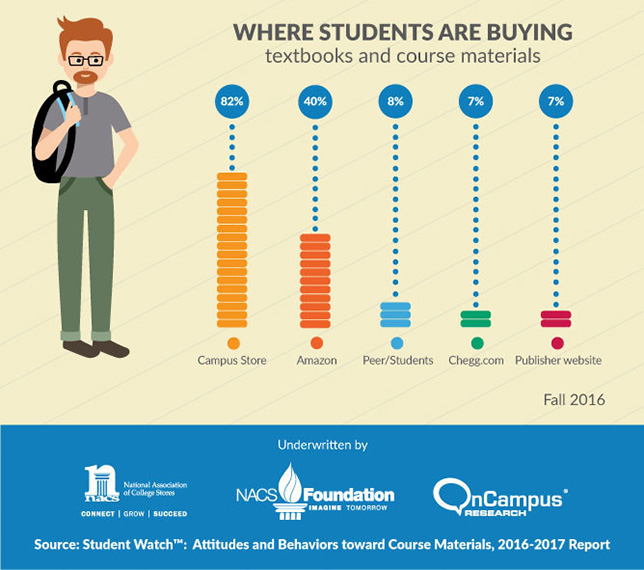Report: Students Spending Less on Course Materials
This academic year, the average cost of college students' required course materials dropped to $579, down from $602 last year and $701 in 2007-2008, according to a new report from the National Association of College Stores. The organization surveyed 24,641 students at 90 higher ed institutions across the United States and Canada on their textbook spending, preferred textbook formats, use of open educational resources and more.
While students are spending less on their course materials, the number of materials purchased has held steady — which NACS attributes to an increase in the use of free and digital materials. "While students report spending less on their required course materials, they're still purchasing roughly the same amount," said Jenny Febbo, vice president of marketing and strategic communications for NACS, in a statement. "Spending is down because use of open educational resources is increasing, and students are buying more lower-cost digital, used and rental materials."
Other findings from the survey include:
- More students are accessing free content: In spring 2017, 25 percent of students reported using a free method (borrowing, sharing or downloading) to obtain their course materials, compared to 19 percent in spring 2016 and 15 percent in spring 2015.
- Textbook rentals are up: In fall 2016, 43 percent of students rented at least one textbook, compared to 40 percent in fall 2015. More than half of those rentals (57 percent) were through the campus store.
- In fall 2016, 82 percent of course materials were purchased from the campus store; 40 percent from Amazon; 8 percent from a peer/student; 7 percent from Chegg; and 7 percent from a publisher website.
- Students buy new print textbooks the most, but they purchase a variety of formats overall: In fall 2016, 74 percent of students reported buying new print copies; 70 percent bought used print; and 23 percent bought digital materials. That 23 percent represented an increase from 15 percent of students purchasing digital materials in fall 2015.
- Students also spent an additional $506 on technology and school supplies.

The full report, "Student Watch: Attitudes and Behaviors toward Course Materials: 2016-2017 Report," is available for purchase from the NACS site.
About the Author
Rhea Kelly is editor in chief for Campus Technology, THE Journal, and Spaces4Learning. She can be reached at [email protected].